
5 Days Wa Ethnic Minority’s New Rice Festival Tour
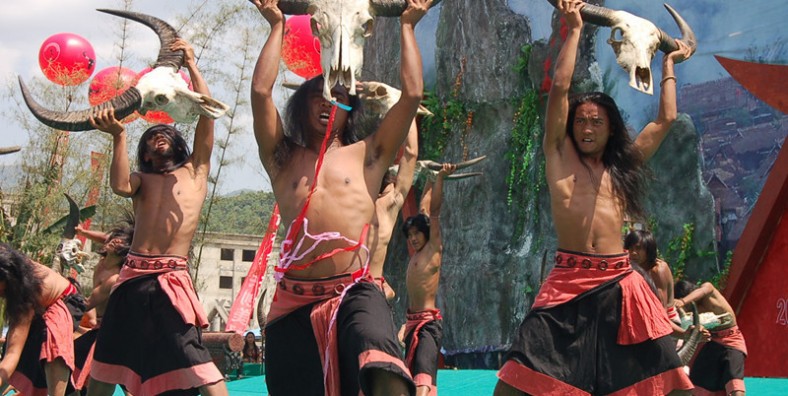
Tour Overview
“New Rice” Festival is one of the traditional festivals of the Wa ethnic minority. In the past, it used to be spent when the rice was ripe for harvest,...
Length of Travel: 5 Day
Destinations of Tour: Kunming-Lincang-Shuangjiang-Cangyuan-Kunming
Departure City: Kunming
Price of Tour: Request
Type of Tour:
Features of Tour: Culture History Minorities ethnic villages
“New Rice” Festival is one of the traditional festivals of the Wa ethnic minority. In the past, it used to be spent when the rice was ripe for harvest, and would last three days. During the festival, ladies would collect some rice from farmlands; dry and then husk them. Early next morning, the doors of the house would be closed to reject visitors and animals, and all the family members would stay at home enjoying the newly-harvested rice–when eating, any spill wouldn’t be allowed. After the family finished, they would open the doors and invite neighbours to enjoy the rice.
Highlights
- Experience the local life and ethnic culture.
- Appreaciate the charming landscape.
- Celebrate the New Rice Festival with local people.
Breif Itinerary
- Day 1 Kunming to Shuangjiang
- Day 2 Shuangjiang-Cangyuan
- Day 3 Cangyuan
- Day 4 Cangyuan
- Day 5 Departure from Cangyuan
Google Map
Detailed Itinerary
Day 1 Kunming-Cangyuan-Shuangjiang
Sightseeing and Activities: The base of tea planting and processing
Accommodation: Shuangjiang
Meals: Breakfast, Lunch
Fly to Cangyuan and drive to Najing natural Nationality Village, the Dai village in Shuangjiang, then head for Rongkangda Wulongshan Manor to visit the base of tea planting and processing.
-Dai village in Najing retains the traditional customs of the Dai nationality. The 300- year- old banyan tree, various precious trees, and you can experience the simple and rustic country life here. You can also see wild peacocks living in the primitive forest if you are lucky.
-13 kilometers from Shuangjiang county, there is a manor called Rongkangda Wulongshan with charming scenery. It involves tea plantation, processing, leisure vacation and boutique hotel. Walking into the picturesque tea manor and having a view of the mountains below, it is just like a fairyland. Stepping into the teak wood road and feeling the great ecological environment, you can not stop relaxing and being happy.
Day 2 Shuangjiang-Cangyuan
Sightseeing and Activities:Cangyuan rock paintings
Accommodation: Cangyuan
Meals: Breakfast, Lunch
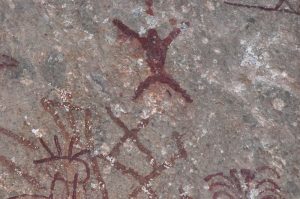
Drive to Cangyuan County(沧源县) after breakfast to visit Cangyuan Cliff Painting and Thousand-Meter Gallery.
-The cliff paintings of Cangyuan is said to take on different colors as the time, weather and humidity change. According to the proverb of the local Wa and Thai people that the cliff painting changes three times a day: in the morning the color is red, at noon lighter and in the evening purple. Nowadays the paintings have already been designated as the key historical relic protection unit at the provincial level.
-Thousand-Meter Gallery, is also called Menglai Grand Canyon, situated at the middle part of the scenic spot. The rock paintings in the area is about 3KM. The cliff is about 80-180 meters high and the highest one is about 280 meters. Some of the cliff surface is ragged like a honeycomb, and some are flat and smooth as if cut by the axe, while some are just like the terraced fields. Due to the erosion of some special materials and the decoration of the climbing plants, the surface the cliff becomes colorful just like a giant rock paintings reflecting the vicissitudes of the nature.
Day 3 Cangyuan
Sightseeing and Activities:167 Boundary Marker, Guangyun Burmese Temple, Wengding Wa Tribe
Accommodation: Cangyuan
Meals: Breakfast, lunch
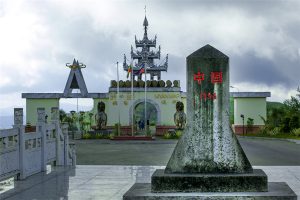
Visit Yonghe Border Port– the 167th boundary monument after breakfast, farseeing the Wa States of Myanmar; the Cangyuan Wa Autonomous County is over 800 km away from Kunming, adjacent to the neighboring Thailand and Laos, south and south-west border with myanmar countries. Yonghe Border Port is a nationally second-grade opening port and 14 km away from Cangyuan County center, directly to all the major cities of Burma. Then visit Guangyun Burmese Temple, which is built in Qing dynasty and has influence on Theravada Buddhism among southwestern ethnic groups of Yunnan.
Head for Wengding Village after lunch(about three and a half hours) to learn the Wa culture and visit their house, cemetery, head pile, the village post and so on.
-Guangyun Burmese Temple is one of the most influential temples that have influence on Theravada Buddhism among southwestern ethnic groups of Yunnan. It is a Theravada Buddhism building that located in the north of Mengdong town in Canyuan county, which is built in Qing dynasty, and also called “Xuetang Burmese Temple”. It is has been 170 years since Guanyuan Burmese Temple was built in 1828, when Wang government has a civil war with GengMa chieftain and then appoint HanRonggao as a new chieftain. Its constructing style was influenced mostly by Han people; meanwhile, it maintained the basic style of Theravada temples. It is a combination of external style of Han buildings and internal decoration style in courtyard of Dai people, such a unique construction style it is! Guangyun Burmese Temple was listed into the third batch of national key protection cultural relics by the State Council on January 13, 1988, due to its important position of history, territory, humanity cultures and religions.
-Yonghe Border Port is a nationally second-grade opening port, which was opened in 1996, a commercial port which connects Cangyuan and Myanmar. It is 14 km away from Cangyuan County center, facing Shaopa region of Mengmao County in Myanmar across the bridge. The 167th boundary monument shares the territory of China and Myanmar, belonging to the two countries. It becomes an unique tourist area cross the border. Va ethnic group in China and Myanmar inhabit harmoniously for generations who share their lives & culture.
-Wengding Village(翁丁村) , is located in 40km away from Cangyuan(沧源) Wa Autonomous County , the southwest of Lincang, Yunnan province.This is one of the best- preserved ancient Wa ethnic communites in China today. The Village was list as the third batch of national famous tourism villages with characteristic landscape by the Ministry of Housing and Urban Rural Development and National Tourism Administration on Oct,2015. It is 17km away from the township government and 39 km from the seat of Cangyuan county, The traffic there is very convenient and the roads to country side are laid with asphalt.
Day 4 Cangyuan
Sightseeing and Activities:New Rice Festival, Hulu Town
Accommodation: Cangyuan
Meals: Breakfast, lunch
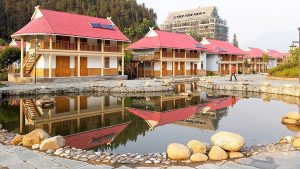
Head for Hulu township to celebrate Wa’s New Rice Festival.
-“New Rice” Festival is one of the traditions prevailing among Wa ethnic minority. In the past, it was observed when the rice was ready for harvest and would last three days. During the festival, owners would collect some rice from farmlands, dry and then husk them. Next early morning, the doors of the house would be closed, rejecting visitors and animals, and all the families would stay at home enjoying the new-harvested rice. After the family finished, they would open the doors and invite neighbors to enjoy the rice.
In 1992, the local government of Menglian Dai and Lau Autonomous County determined the festival as a mandatory holiday for the Wa and Lahu minorities, and the date has been confirmed during lunar 13-15 August.
Day 5 Departure from Cangyuan to Kunming
Sightseeing and Activities: Departure from Cangyuan to Kunming
Accommodation:
Meals: Breakfast
Departure from Cangyuan to Kunming. After arriving in Kunming, service ends.
Recommended Hotels
| Destination | 5 Star | 4 Star | 3 Star | Hostels |
| Lijiang | Lijiang Hilton Garden Inn | Wangfu Hotel | Baisha Holiday Resort |
Erma’s Inn |
| Kunming | Crown Plaza Kunming City Centre | Wenhui Hotel | Baiyun Hotel |
T&T Story Hotel |
| Dali | Hilton Dali Resort And Spa | Landscape Hotel | Gnosis Hotel |
Dali Fengxue Gucheng |
| Shangrila | Shangrila Hotel | Zhaxidele Hotel | Shenqu Hotel | Wu Fu South Yunnan Boutique Inn |
| Cangyuan | / | Jinwa International Hotel | Jialinsai Hotel | Cangyuan Yinfeng Guesthouse |
| Shuangjiang | / | / | Jinqiao Hotel | Local Guesthouse |
Service Included:
1.Admission fees for all of the sightseeing spots listed in the itinerary;
2.Meals as listed in the itinerary;
3.Accommodation with breakfast as listed in the itinerary;
4.Private English-speaking tour guide and vehicle for transfers & sightseeing;
5.Service charge & government taxes;
6. Luggage transfers between airports and hotels;
7. Two bottles of mineral water each day;
8.Domestic air tickets fares with airport tax and fuel extra fee based on economy class mentioned in the program.
Service Excluded:
1.Any arrival and departure international airfares or train tickets;
2.Chinese visa fees;
3.Excess baggage charged by Airlines;
4.Single room supplement;
5.Tips to guides and drivers;
6.Personal expenses and gratuities to service staff;
7.Personal travel insurance;
8.All optional programs;
Travel Tips:
-Visitors are advised to always carry changes of clothing due to the large variations in temperature between day and night.
-The climate is relatively dry, so drink more water every day.
-Protecting oneself from strong UV radiation at high altitude.
-Protecting oneself from altitude sickness. Lessen the effects of altitude sickness, avoid strenuous exercise and have plenty of rest.
-Respect local customs , habits, and religious beliefs.
-Situated on the northern edge of the tropical zone, Xishuangbanna area is hot, humid and rainy; don’t forget to take an umbrella or a raincoat when go out.
-When take photos, please pay attention to your safety, do not shoot in dangerous areas.

 7 Days GolfingTour
7 Days GolfingTour
 8 Days Group Tour
8 Days Group Tour
 8 Days Yunnan Tour
8 Days Yunnan Tour
 7 Days Shangri La Hiking
7 Days Shangri La Hiking
 11 Days Yunnan Tour
11 Days Yunnan Tour
 6 Days Yuanyang Terraces
6 Days Yuanyang Terraces
 11 Days Yunnan Tour
11 Days Yunnan Tour
 8 Days South Yunnan
8 Days South Yunnan
 7 Days Tea Tour
7 Days Tea Tour
 8 Days Muslim Tour
8 Days Muslim Tour
 12 Days Self-Driving
12 Days Self-Driving
 4 Days Haba Climbing
4 Days Haba Climbing
 Tiger Leaping Gorge
Tiger Leaping Gorge
 Stone Forest
Stone Forest
 Yunnan-Tibet
Yunnan-Tibet
 Hani Rice Terraces
Hani Rice Terraces
 Kunming
Kunming
 Lijiang
Lijiang
 Shangri-la
Shangri-la
 Dali
Dali
 XishuangBanna
XishuangBanna
 Honghe
Honghe
 Kunming
Kunming
 Lijiang
Lijiang
 Shangri-la
Shangri-la
 Yuanyang Rice Terraces
Yuanyang Rice Terraces
 Nujiang
Nujiang
 XishuangBanna
XishuangBanna
 Spring City Golf
Spring City Golf
 Snow Mountain Golf
Snow Mountain Golf
 Stone Mountain Golf
Stone Mountain Golf
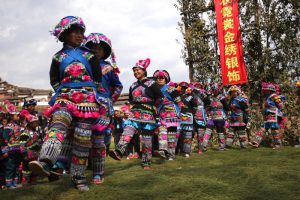













hello,
im interesting in any festivals that will be in dali or shaxi on june 2025 ?
The main festivals in May in Shaxi, Dali are Shaxi Cultural Tourism Carnival and March Street Ethnic Festival.
Shaxi Cultural Tourism Carnival
The Shaxi Cultural Tourism Carnival is a traditional festival in Shaxi Town, usually held on the eighth day of the fourth lunar month (May 8th). This festival aims to showcase the cultural and tourism characteristics of Shaxi, including the opening ceremony of the Shengshi Village History Exhibition Hall.
March Street Ethnic Festival
The March Street Ethnic Festival is an important festival in Dali Prefecture, usually held on the 15th day of the fourth lunar month (May 4-10) every year. This festival is one of the most representative ethnic festivals in Dali, attracting people from all over the country to participate. The activities include horse racing, singing, doing business, etc., showcasing the joy and unity of people of all ethnic groups.
2025.July.19 is torch festival.